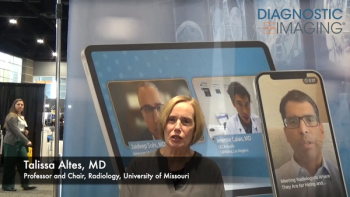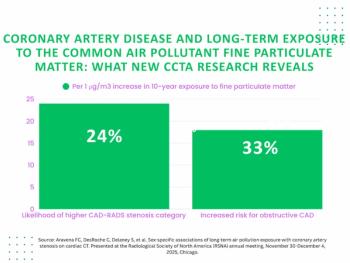
Admission CT for Appendicitis Predicts Resource Utilization
CT performed on admission for patients with suspected acute appendicitis can predict hospital resource utilization.
Admission CT findings are independent predictors of hospital resource utilization in suspected acute appendicitis, according to a study published in the
Researchers from the NYU School of Medicine in New York retrospectively investigated the association between baseline CT findings in suspected acute appendicitis and subsequent hospital resource utilization.
The study included 138 patients (76 male and 62 female patients, mean age of 40), who were admitted for suspected acute appendicitis and underwent baseline CT. Among this group, 97 patients (70.3%) underwent inpatient surgery. A total of 89 of the 97 surgeries (91.8%) were performed using a laparoscopic approach, and eight (8.2%) were performed using an open approach. Fifty-three of the patients had surgery the same day as the CT exam, 38 the following day.
Significant independent predictors of inpatient surgery were:
• Older age
• Lower Charlson comorbidity index (CCI)
• Smaller appendiceal wall thickness
• Absence of loculated RLQ fluid collection
• Absence of periappendiceal free fluid
These yielded a sensitivity of 92.7% (89 of 96) and a specificity of 65.8% (25 of 38) in prediction of inpatient surgery.
Twenty-two more patients underwent surgery for appendicitis after they had been discharged; resulting in 84.1% of patients undergoing surgery.
Significant independent predictors of same-day discharge were:
• Smaller appendiceal diameter
• Absence of periappendiceal fluid
• Laparoscopic surgery
Significant independent predictors of repeat abdominopelvic CT were:
• Greater CCI
• Greater wall thickness
• Presence of periappendiceal fluid
“Presence of an appendicolith was the only significant predictor of repeat emergency department visit within 30 days,” the authors noted. “[A]nd the only significant predictor of repeat inpatient admission within 30 days. Greater appendiceal diameter and presence of free air were significant predictors of inpatient costs.”
Predicted costs were:
• $8047 + ($745 × appendiceal diameter) if free air was absent; and $−39,261 + ($4426 × appendiceal diameter) if free air was present
The authors pointed out that costs were poorly predicted when greater than $45,000.
Newsletter
Stay at the forefront of radiology with the Diagnostic Imaging newsletter, delivering the latest news, clinical insights, and imaging advancements for today’s radiologists.




























